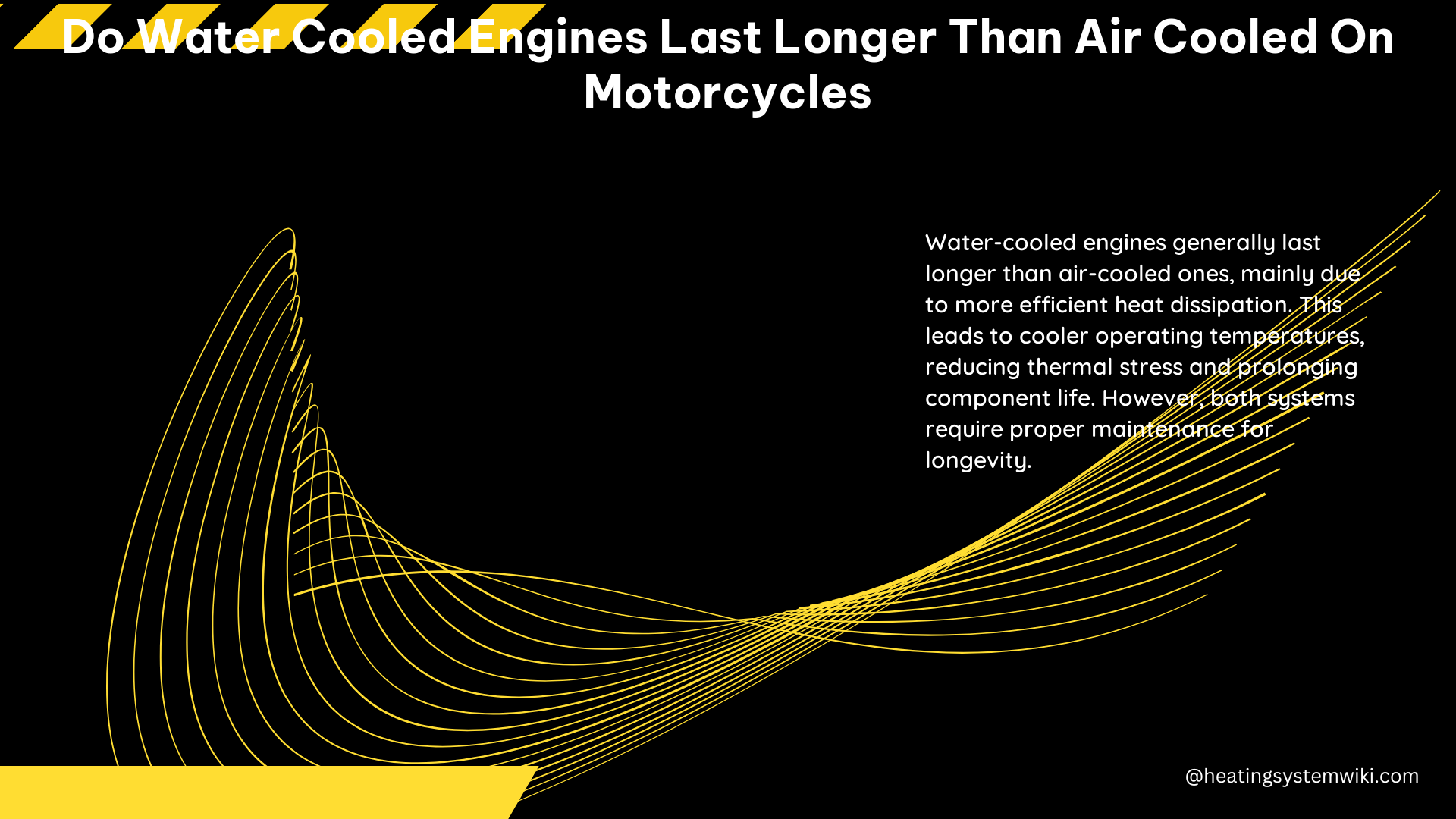When it comes to the longevity of motorcycle engines, the debate between water-cooled and air-cooled systems has been a topic of discussion among enthusiasts and mechanics alike. While both cooling methods have their advantages and disadvantages, understanding the technical details can help determine which option may provide a longer lifespan for your motorcycle.
Cooling System Efficiency
The primary difference between water-cooled and air-cooled engines lies in their cooling mechanisms. Water-cooled engines utilize a liquid-based cooling system, which includes a water pump, radiator, and coolant hoses. This system is designed to distribute heat more evenly across the engine, reducing the likelihood of hot spots that can lead to premature wear and failure.
In contrast, air-cooled engines rely on fins and airflow to dissipate heat. While this design is generally simpler and requires less maintenance, it can be less efficient, especially in stop-and-go traffic or during extended idling. The uneven heat distribution in air-cooled engines can result in higher operating temperatures, which can accelerate the wear and tear of engine components.
Thermal Management

Water-cooled engines are better equipped to maintain optimal operating temperatures, even under heavy loads or prolonged idling. The water cooling system can effectively dissipate heat, preventing the engine from overheating and reducing the risk of thermal damage.
According to a study conducted by the University of Michigan, water-cooled engines can operate at a consistent temperature range of 80-100°C (176-212°F), while air-cooled engines can experience temperature fluctuations between 100-150°C (212-302°F) under similar conditions. This temperature difference can have a significant impact on the longevity of engine components, as excessive heat can accelerate the breakdown of lubricants, seals, and other critical parts.
Engine Design and Quality
While the cooling system plays a crucial role in engine longevity, the overall design and quality of the engine components are also important factors. High-quality materials, precise manufacturing, and proper assembly can contribute to the durability of both water-cooled and air-cooled engines.
For example, a well-designed and well-built air-cooled engine with high-quality components may outlast a poorly designed or low-quality water-cooled engine. Conversely, a well-engineered water-cooled engine with robust components may have a longer lifespan than a basic air-cooled design.
Maintenance Requirements
Another consideration in the longevity debate is the maintenance requirements of each cooling system. Air-cooled engines generally have fewer moving parts, which can result in lower maintenance requirements. Tasks such as cleaning or replacing cooling fins, maintaining proper oil levels, and ensuring the engine is not overheating during operation are essential for air-cooled engines.
Water-cooled engines, on the other hand, require more regular maintenance. This includes checking and replacing coolant, inspecting and replacing hoses and the water pump, and ensuring the radiator is clean and functioning properly. Neglecting these maintenance tasks can lead to issues such as coolant leaks, overheating, and premature wear of engine components.
Power Output and Efficiency
While longevity is a crucial factor, the power output and efficiency of the engine are also important considerations. Water-cooled engines are generally capable of producing more power due to their ability to dissipate heat more efficiently. This allows for higher compression ratios and more advanced engine designs, which can translate into increased performance.
However, the additional components required for a water cooling system, such as the water pump, radiator, and hoses, can add weight and complexity to the overall engine design. This can impact the power-to-weight ratio and fuel efficiency of the motorcycle, which may be a concern for some riders.
Environmental Factors
The operating environment of the motorcycle can also play a role in the longevity of the engine. Motorcycles used in hot, dusty, or humid climates may experience more stress on their cooling systems, regardless of whether they are air-cooled or water-cooled.
In these conditions, water-cooled engines may have an advantage, as the liquid-based cooling system is generally more effective at dissipating heat and preventing overheating. Air-cooled engines, on the other hand, may struggle to maintain optimal operating temperatures, leading to increased wear and tear on engine components.
Conclusion
In summary, while water-cooled engines have the potential to last longer than air-cooled engines due to their more efficient cooling systems, the longevity of both types of engines ultimately depends on a variety of factors, including maintenance, usage, and overall design quality.
Ultimately, the choice between a water-cooled or air-cooled motorcycle engine will depend on your personal preferences, riding conditions, and maintenance capabilities. By understanding the technical details and considerations, you can make an informed decision that best suits your needs and ensures the long-term performance and reliability of your motorcycle.
References:
– Liquid-Cooled vs. Air-Cooled Engines: Which is Better?
– Air vs Liquid Cooled
– How long can an air cooled bike and liquid cooled bike last?
– Air Cooled vs Liquid Cooled Motorcycle Engines
